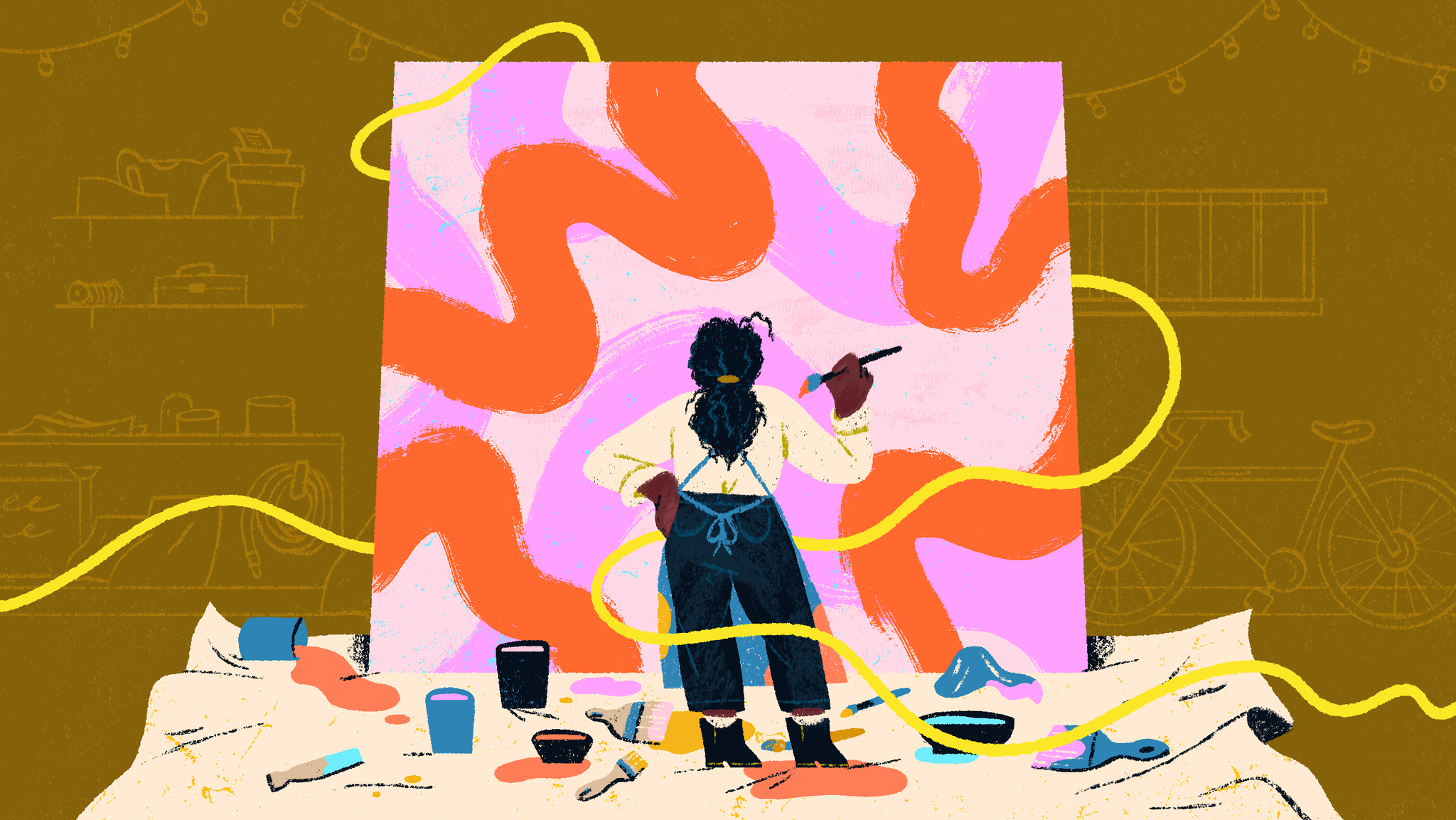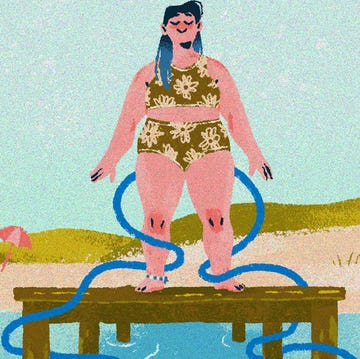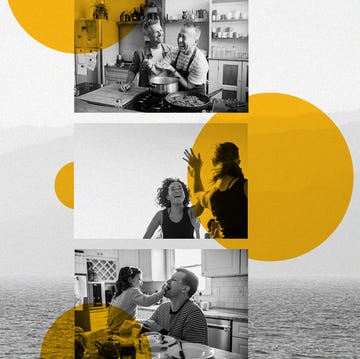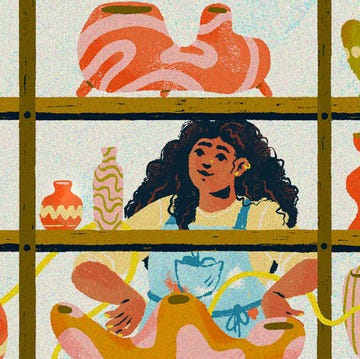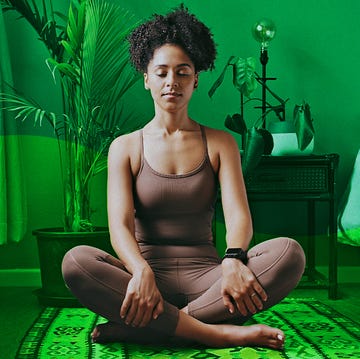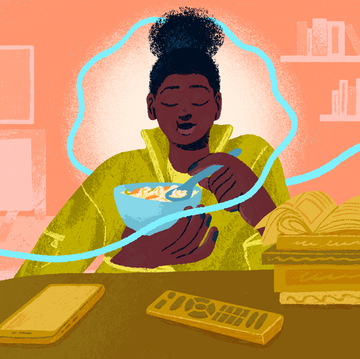Caring for our mental health has become more essential than ever before. The way we treat our bodies, how and with whom we spend our time, and what thoughts are center stage in our minds are vital. In the monthly Shondaland series A Path to Well-Being, we’re sharing science and strategies to help you better understand and manage your well-being.
Playtime isn’t just for children. Though you might’ve given up playing in favor of engaging in serious adult stuff, play is just as good for grown-ups as it is for youngsters. It’s vital for all of us, actually.
Play — the act of engaging in diversion, amusement, or recreation for its own sake — is essential to well-being and integral to the human experience, according to research from the National Institute for Play. The capacity for play is literally wired into our brains. It’s one of our seven basic emotional systems.
“Play is enormously important,” says Catherine Price, author of The Power of Fun: How to Feel Alive Again. “We’re such perfectionists, so to find a context in which you can let down your guard, it’s incredibly freeing and very conducive to fun.”
While play itself is both an action and an attitude, it’s playfulness, which anyone can cultivate, that leads to more lightheartedness and fun in our everyday lives. It turns out fun is seriously good for us, Price says. A feeling she defines as the confluence of playfulness, connection, and flow, fun reduces stress, fosters intimacy, increases relaxation, and stimulates creativity. All of those traits help reduce chronic inflammation, which is associated with increased risk of diabetes, heart disease, strokes, and cancer.
While fun might seem irresponsible to prioritize, it’s actually a worthy health intervention. “It has the opposite effect on your body physiologically,” Price says, “than when you are feeling lonely, isolated, or emotionally stressed out.” Here’s how to invite more playfulness into your life:
Let go of perfectionism
Perfectionism is the enemy of playfulness, which requires allowing yourself to be swept up in the moment. To release the need to be totally perfect — or simply good — at the fun thing you want to try, Price suggests approaching the experience by asking yourself this innocuous query: What’s the worst that could happen?
“That’s a question that can be posed in all sorts of contexts that leads to a spirit of playfulness,” Price says, adding that it also helps to embrace absurdity and a willingness to laugh at yourself.
Consider adopting the “yes, and” approach of improv comedy, which calls for affirming and building on whatever suggestion a scene partner presents onstage. You can do this in real life by going with the flow of a friend’s or child’s imagination. Rather than immediately shutting down suggestions that seem too goofy or push you out of your comfort zone, take the pressure off, and give them a shot. It’ll increase your chances of truly having fun.
“As long as you aren’t hurting someone, there’s no wrong way to play,” notes psychiatrist Stuart Brown, author of Play: How It Shapes the Brain, Opens the Imagination, and Invigorates the Soul.
Know your play personality
If it’s been so long since you really felt playful that you’re not sure where to begin, determine your “play personality,” Brown suggests. He’s identified eight archetypes — based on more than 6,000 interviews and clinical observations — that can help you connect with activities and opportunities to turn up your personal playfulness. They are:
- collector, who enjoys assembling objects or experiences
- competitor, who thrives on playing — and winning — games with specific rules
- creator, who finds joy in artistic pursuits or otherwise making things
- director, who plays through planning and organizing events and experiences
- explorer, who delights in physical, emotional, or intellectual discovery
- joker, who plays through silliness, humor, and practical jokes
- kinesthete, who feels most playful when moving — no rules or competition required
- storyteller, who plays with imagination through words and images
Identify your fun magnets
Knowing your play personality can help you find more fun and to discover what Price calls “fun magnets.” Because fun is a feeling, not a specific activity, anything that brings on the confluence of playfulness, connection, and flow qualifies as fun — and that looks different for everyone.
“Fun magnets are the people, settings, and activities that are the most likely to generate fun for you personally,” Price explains. “For some people, karaoke might be a huge fun night. And for another person, that’s a nightmare of a night out.” You can make better use of your leisure time and increase the health-boosting benefits of play and fun in your life when you know your fun magnets so you can prioritize creating those circumstances.
To identify your fun magnets, reflect on memories you recall as particularly fun. It doesn’t have to be a mind-blowing experience or exotic vacation, Price notes, just ordinary moments of everyday good times. Then, look for themes in those events. Are there particular people, places, or activities these memories share? Those might be your fun magnets. While knowing them won’t guarantee fun, making room for more of these magnets on your schedule allows more opportunities for authentic fun to arise.
Distinguish between true and fake fun
Not everything that claims to be fun is actually fun. “There are a lot of products and activities that are marketed to us as fun,” Price says, “but if you actually think about the feelings they produce, they’re not playful [and] connective, and therefore they’re not fun. It’s fake fun.”
The biggest offender, according to Price, is social media. It’s a leisure-time activity that seems like it should be joyful but actually inspires loneliness, FOMO, and feelings of inadequacy. Understanding the distinction between true fun and fake fun makes it easier to know what to spend time on and what to limit, Price says, especially because true fun can arise unexpectedly and in tiny doses.
“If I’m walking my dog down the street and have 10 seconds of banter with a stranger, and we both laugh then part ways, it’s like, ‘Oh. That was a moment of true fun right there!’” Price says. “That’s really important.”
Another quick way to experience true fun is to pay attention to small delights — a hummingbird dipping into a flower, a kid in a dinosaur costume for no reason — and share them in a text chain with friends. Feeling playful, connected, and in the moment, however briefly, is pure fun.
Sandy Cohen is a writer, health and wellness coach, and host of the Inner Peace to Go podcast. Follow her on Twitter @YouKnowSandy.
Get Shondaland directly in your inbox: SUBSCRIBE TODAY
